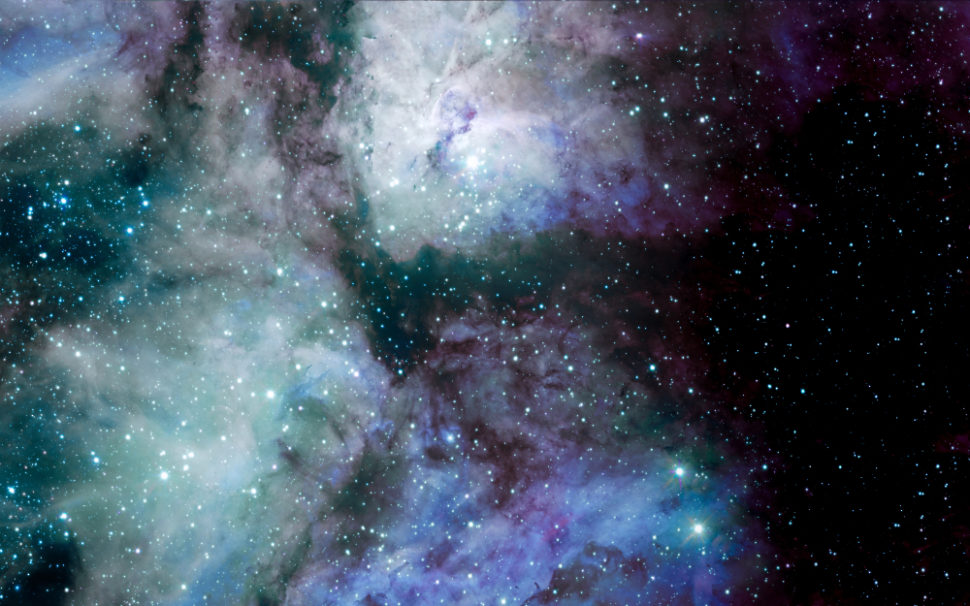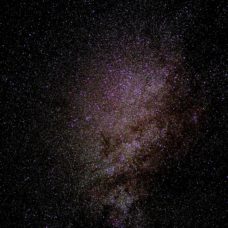While some scientists want to gather the four fundamental forces under a single comprehensive framework, others are after the speculative fifth force.
The earliest speculations about the nature of the world and life itself involved more philosophy than astrophysics.
Leading Greek philosophers for example thought it all comes down to four elements: earth, water, air, and fire.
We soon realized these four elements, or the five Platonic Solids, can’t explain the complexity of life.
The more our understanding of the Universe evolved, the more uncertainty rose. There seems to be no absolute “big” or absolute “small”; there’s always something bigger or smaller.
One active ingredient in the receipe of life appears to be gravity, which we first knew about thanks to Isaac Newton, about three centuries ago.
Gravity was the first fundamental force to be discovered, though it’s still the least understood. In the 19th century, the electromagnetic force joined in.
Then, in the 20th century, the weak nuclear interaction and the strong nuclear interaction.
The Standard Model in physics, which comprises three of the four fundamental forces, can’t answer all the effects in the Universe.
Either we need a more comprehensive framework than the Standard Model, or the equation is missing another variable: the fifth fundamental force.
May the Fifth Force be With you
Why does the universe need a fifth force?
The Standard Model can’t encompass the whole cosmological picture, which is mostly dark matter and energy.
While the strong and weak interactions and the electromagnetic force integrate relatively well in a common theoretical scheme, gravity remains a wild entity that resists all attempts of unification.
Gravity is the oldest known of the four fundamental forces yet it’s the most mysterious.
The gravitational effects can be seen and measured on large scales, from keeping our feet on the ground up to governing the movement of planets, stars, and galaxies.
However, gravity has no grip on the microscopic world, unlike the three other forces.
If the Standard Model can’t fit gravity, scientists need to devise a theoretical scheme that does.
Some of them believe that during the Big Bang these four forces were united in a single superforce.
They also think that they can unify them theoretically under a single framework, or a Theory of Everything.
Read More: Everything You Need to Know About the Theory of Everything
There are some promising venues in this regard, like String Theory or Emergence Theory, but neither appears to have a sledgehammer argument that it is THE Theory of Everything.
Unlike other fundamental forces, gravity has no known carrier particle.
For gravity to join the cosmic fray of our particle physics, there must be a particle that helps us put together a unifying frame. But physicists have yet to detect this hypothetical particle called a graviton.
Some scientists suggest that gravity might not be a fundamental force of the Universe after all, which could explain why all attempts to quantize it have failed.
What if instead of trying to shoehorn gravity into a framework that doesn’t quite fit, we find another force; the fifth force, that would be like the missing ingredient.
The fifth force would make “everything” suddenly make sense by shedding light on the “dark” side that makes up most of the picture.
What is the Fifth Force?
The whole Standard Model, and every physical law within it, is based on observations of and experiments on Baryonic Matter. Baryonic Matter is ordinary matter that makes up everything we can see and touch, including us.
However, we still don’t know what the non-Baryonic 96 percent of the Universe is made of.
All we know is that it’s “dark”, it doesn’t interact at all or very little with ordinary matter, and doesn’t emit any signals that we can catch.
Welcome to the “dark sector”, the domain of dark matter and dark energy.
Read More: Earth is About to be Hit by a Dark Matter Hurricane
Theoretical physicists don’t exclude the existence of a fifth force, whose concept goes back to the 1980s.
In 1986, a research team led by physicist Ephraim Fischbach, professor of physics at Purdue University, discovered an anomaly in gravity data which they interpreted as the effect of another fundamental force, the fifth force of nature.
This hypothetical gravity-like force would explain the acceleration of the Universe, and act as a link between gravity and other fundamental forces to complete the picture.
The discovery of a fifth force will turn physics upside down and dramatically change our understanding of the Universe’s mechanisms.
The Fifth Force, the Key to the Dark Sector
The implications of such a discovery go beyond the unification of the fundamental forces under a theory of everything, which encompasses the dark sector, opening horizons before undreamt of.
Over three decades after it was first brought up, the fifth force is still a complete mystery, if it does even exist.
Some researchers believe the fifth force does exist and are on the hunt for it.
In 2015, physicists at the Hungarian Academy of Sciences conducted an experiment in an attempt to close in on “dark photons”, suggested as hypothetical carrier particles of dark matter.
The Hungarian team, led by Professor Attila Krasznahorkay, discovered a radioactive decay anomaly, which suggests the existence of a particle 30 times heavier than an electron, and which is not predicted by the Standard Model.
Then, in 2016, researchers at the University of California Irvine, led by theoretical physicist Jonathan Feng, reanalyzed the Hungarian team’s data and other related experiments.
Feng’s team concluded said particle could be a “protophobic X boson”, an interaction-carrier particle that points to a fifth fundamental force.
As we speak, a team of physicists in Italy is collecting data for an experiment known as the Positron Annihilation into Dark Matter Experiment, or PADME for short.
The PADME team wants to find dark photons and unlock the dark realm. They will attempt to do this by using electron-positron pairs.
Positrons are the antimatter equivalent of electrons, and the two would annihilate if they come into each other, producing a pair of regular photons.
The PADME experiment aims “to seek this [matter-antimatter annihilation] event through the accurate reconstruction of the missing mass in the balance between the initial state, constituted by the electron-positron pair and the final state in which only the ordinary photon is detected.”
Dark photons, if ever detected, would be the “messenger particles” that bridge the ordinary world and the dark sector. As such it could be the key representative of the fifth force.
“At the particle physics level, we can think about forces between two objects as those objects exchanging particles,” Adam Martin, an assistant professor of physics told Newsweek. “So, a new particle in the zoo means there is another thing that can be exchanged and therefore a new force.”
CERN scientists, using the Large Hadron Collider, also are on the hunt for dark photons and, so far, they have been unsuccessful.



















Might I suggest Fiona Hill.